A review and sample photos of the MS-APOQUALIA 35mm F1.4 (MS-Optics / Miyazaki Optical) used with a digital rangefinder camera and a mirrorless camera.
- Please see the disclaimer regarding advertising here.
- Italicized links in the text are advertisement links that take you to other sites.
Table of contents
Gallery
The following cameras were used to take the sample photos.
- LIECA M10
- LEICA M typ240
- LEICA M8
- LEICA SL Typ601
- LEICA T typ701
- HASSELBLAD X2D-100C
Review
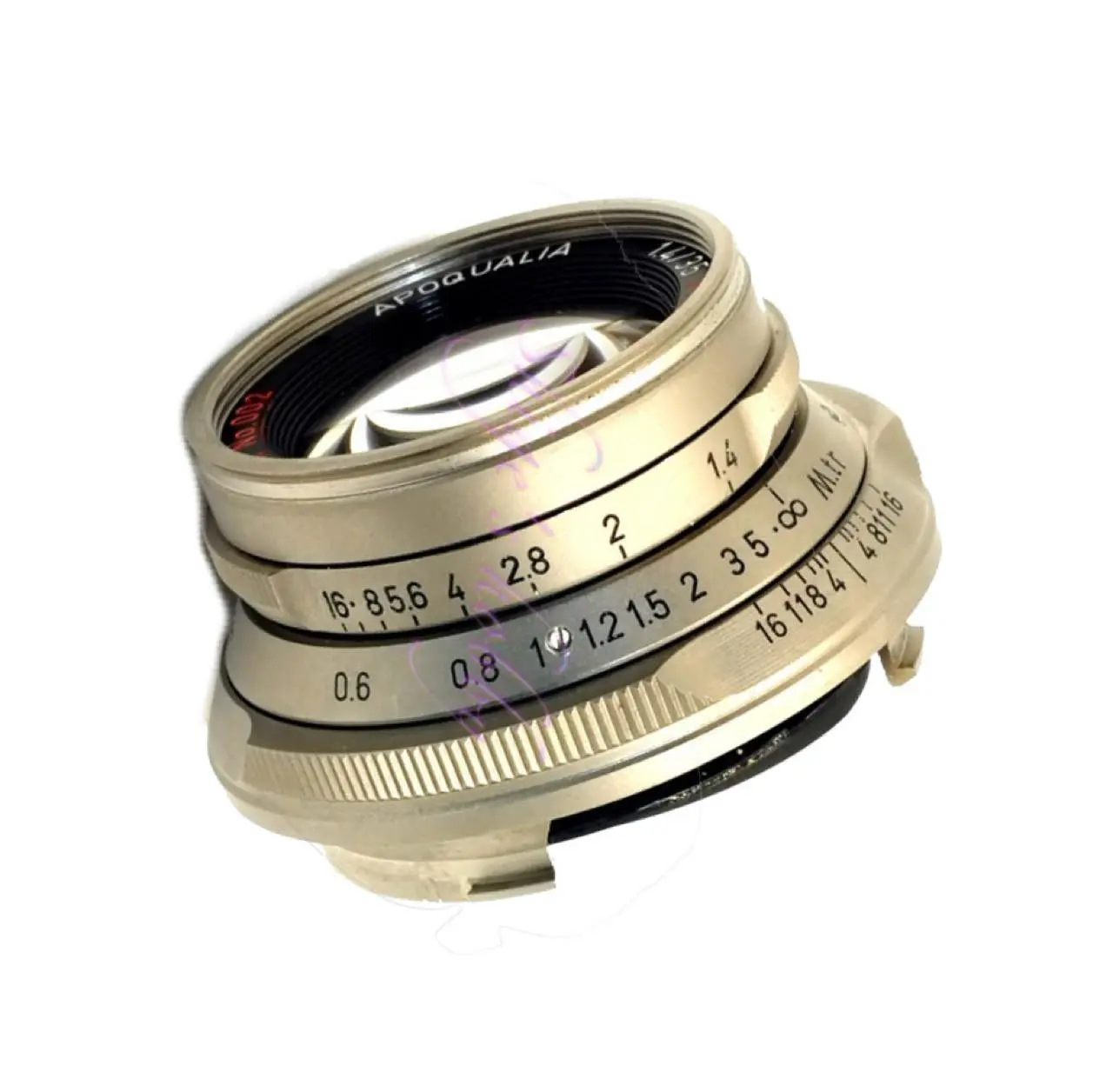
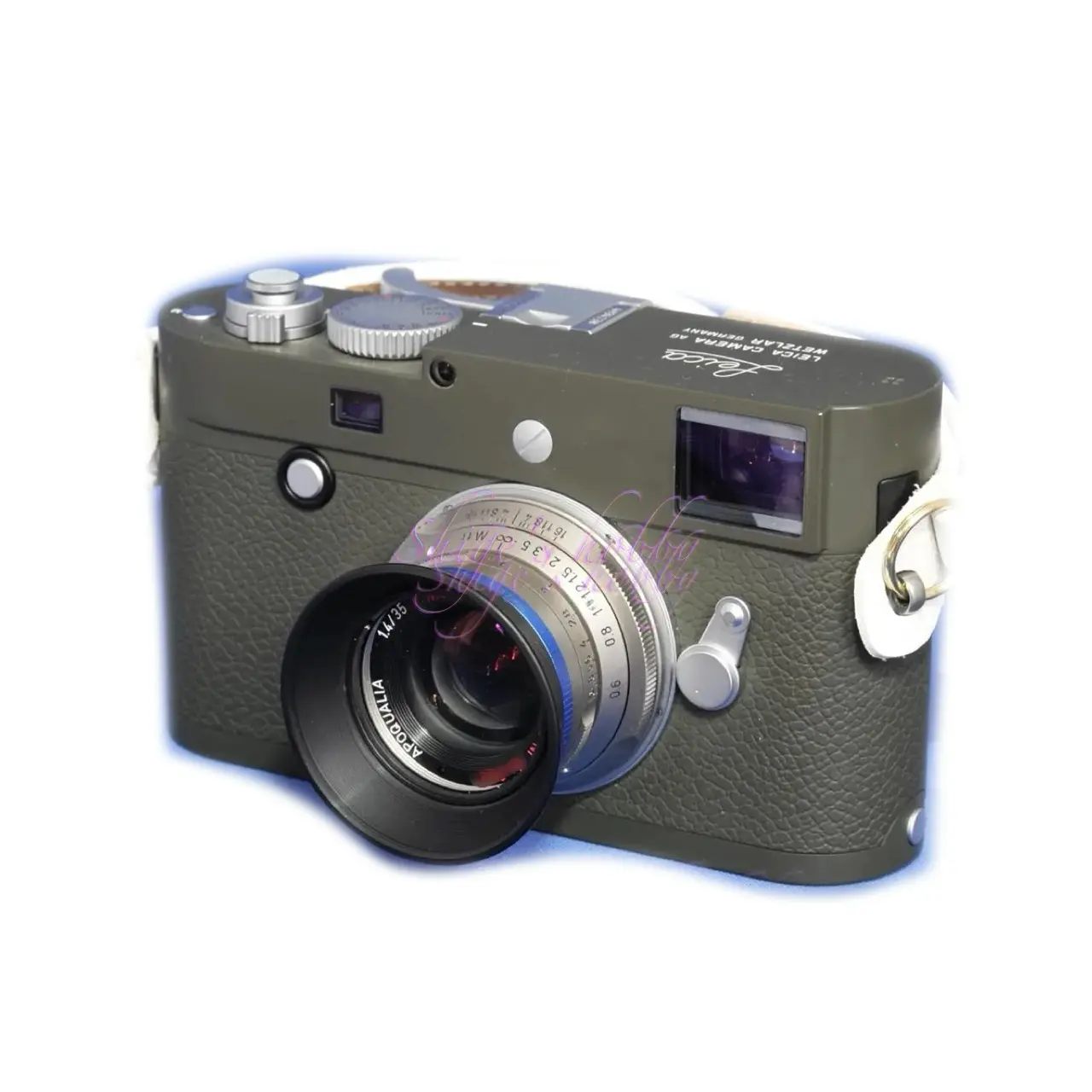
1.Overview
The Ms-Optics APOQUALIA 35mm F1.4 is a large-aperture lens with a focal length of 35mm released by Ms-Optics in 2016.
It uses a Gaussian lens with 6 elements in 4 groups, and the minimum shooting distance is 0.6m, and it works with the M-type Leica distance system up to 0.8m.
The filter is a reverse-attach type that Miyazaki Optical is particular about, and uses a 37mm diameter. The lens hood is a trumpet type with a 37mm reverse thread, so a filter is attached and then attached on top of it.
There are many variations in the lens appearance, and it has been released in various lens barrel colors such as black, silver, silver rhodium, and black paint. It is also the prototype of the REIROL 35mm F1.4 released by MAP CAMERA, which will be introduced on a separate page.
2.Usability
The MS-APOQUALIA 35mm F1.4 is a compact lens, typical of 35mm lenses designed for rangefinder cameras. However, compared to lenses from major manufacturers, there are areas where the focus and aperture rings show gaps, suggesting manufacturing imperfections and a lack of refinement in the build quality.
This issue appears to have been improved in Ms-optics lenses from the 2020s, suggesting it’s related to the manufacturing period.
In terms of image quality, at maximum aperture, the focus is sharp in the center, but the edges lack sharpness. This improves when stopped down to F2.8, so it’s something that can be avoided depending on how the lens is used. When using the maximum aperture, it’s important to choose the scene carefully and avoid overuse to prevent monotony.
The lens’s aperture ring lacks click stops, and while this might be unique to my particular unit, the aperture ring is also loose and lacks precision, which is disappointing.
■Digital rangefinder camera
The Leica M10 and M-P typ240 are digital rangefinder cameras equipped with a 35mm full-frame, 24-megapixel sensor, allowing for shooting with the same feel as a film camera.
At wide-open aperture, vignetting is visible even on 35mm film, indicating that this lens has a narrow image circle.
As mentioned earlier, at wide-open aperture, while the focus point remains sharp, the overall image has a soft, flared appearance.
Furthermore, when focusing with the rangefinder’s double image coincidence at wide-open aperture, if the photographer’s technique doesn’t match the camera and lens combination, the focus point in the resulting image will be different from the intended focus point. This is common with lenses with a bright wide-open aperture, but with a digital rangefinder camera, you can check the focus point on the monitor after shooting, so after shooting several times, you’ll get a feel for the subtle coincidence of the double image and the correct focus point.
The Leica M8 is equipped with an APS-H size, 10-megapixel image sensor. Because the sensor size is smaller than a 35mm film frame, the effective focal length is 47mm (35mm multiplied by a conversion factor of 1.33 based on the sensor size), and the resulting image is recorded with the edges of the lens (periphery) cropped. When using this lens, the viewfinder frame displays the equivalent of 47mm, so no special awareness is needed to understand the shooting range. If using an external viewfinder, you would use a 50mm external viewfinder, which is close to the 47mm equivalent.
Because the image is cropped, cutting out the periphery where vignetting and lens characteristics are most apparent, the resulting image appears more natural than the results from a 35mm full-frame sensor camera.
The minimum focusing distance is 0.8m with the rangefinder’s distance meter coupling, which is closer than the 1m minimum focusing distance of the older, large-aperture 35mm Summilux lens, making it slightly more convenient to use.
■ Mirrorless camera
The Leica SL typ601 is a mirrorless camera equipped with a full-frame 24-megapixel sensor, and its image quality is comparable to that of a digital rangefinder camera.
Mirrorless cameras allow for precise focusing using an electronic viewfinder. However, this lens has a shallow depth of field, so even when looking at sample photos, it’s somewhat questionable whether the focus is precisely on the subject’s eyes.
To achieve more accurate focusing, it’s necessary to compose the shot, move the magnified display frame to the desired focus point, and then adjust the focus. It’s crucial to strictly adhere to the practice of not changing the composition after adjusting the focus.
When using the electronic viewfinder with magnification to fine-tune the focus, you can visually confirm that even a slight movement of the focus ring at the widest aperture setting smoothly shifts the plane of focus. This subtle difference highlights the difficulty of achieving precise focus with a mechanical split-image rangefinder.
The LEICA T typ701 is a mirrorless camera equipped with a 16-megapixel APS-C size sensor. Since the electronic viewfinder is an add-on accessory, when shooting using the rear LCD screen, it’s difficult to determine if the focus is precisely on the intended subject even when viewing the entire screen. It’s always safer to use the image magnification function to check the focus. If the image appears blurry when viewed on a PC, the focus is likely off.
Because the APS-C size sensor is smaller than a 35mm film frame, a 35mm focal length becomes equivalent to a 52.5mm focal length after applying a 1.5x crop factor. Since a larger area is cropped compared to an APS-H size sensor camera, it allows for shooting more like a standard lens.
Compared to the 44mm x 33mm sensor size used in the HASSELBLAD X2D-100C, which features a medium format digital sensor, this lens’s image circle is insufficient, resulting in vignetting at the edges at the widest aperture, and the image quality in the peripheral areas is poor. This lens allows you to focus down to a minimum shooting distance of 0.6m on a mirrorless camera, but recently mount adapters with auxiliary helicoid mechanisms have become available, which allow for even closer focusing.
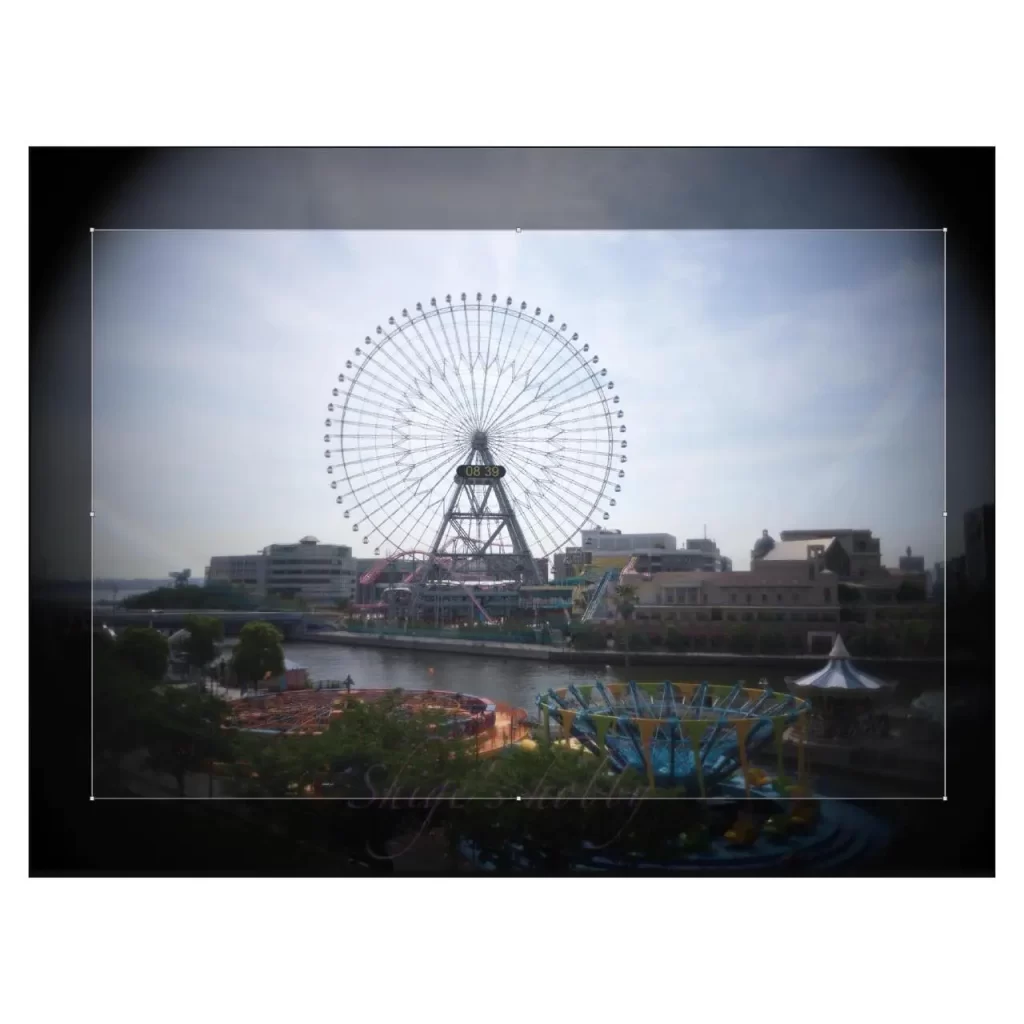
3.Summary
In conclusion, to summarize the MS-APOQUALIA 35mm F1.4, it’s a lens that shares characteristics common to Ms-Optics lenses, with a soft, dreamy rendering at wide open aperture and improved stability when stopped down. However, even when stopped down, the rendering in the periphery only improves slightly, so excessive expectations may lead to disappointment. If possible, it’s best to test shoot with the lens before purchasing to determine if it suits your preferences.
There is also an F1.3 version of the APOQUALIA, but its wide-open aperture rendering is more erratic than the APOQUALIA G 35mm. The later released APOLLON 35mm F1.3 is said to have addressed the erratic wide-open aperture rendering of the APOQUALIA F1.3, but I don’t own one myself, so I can’t provide further details.
Specifications, considerations, etc.
The image quality of the MS-APOQUALIA 35mm F1.4 at its widest aperture setting is similar to the image quality one would expect from an older SUMMILUX 35mm F1.4.
This means the entire image is prone to flare, and the edges of the frame are somewhat distorted. This isn’t due to a cloudy lens; it’s simply how the MS-APOQUALIA 35mm F1.4 is designed.
In contrast, the relatively newer SUMMILUX M 35mm F1.4, even at its widest aperture, doesn’t exhibit much flare and produces a fairly normal image.
If you’re looking for a unique 35mm lens with character, the MS-APOQUALIA 35mm F1.4 would be a good candidate. While several Chinese-made 35mm F1.4 lenses have been released since the 2010s, they surprisingly feature complex lens designs similar to the M-type aspherical SUMMILUX.
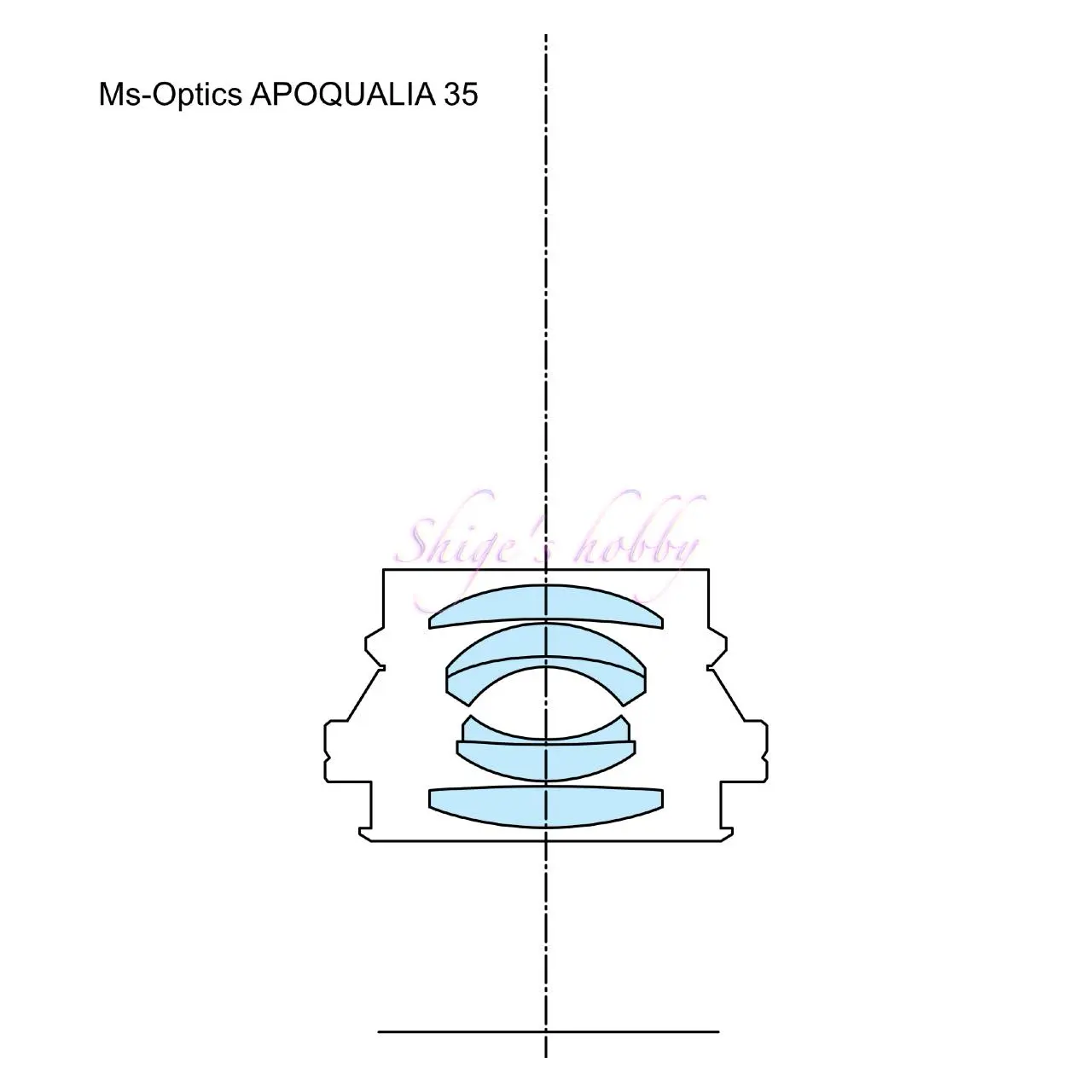
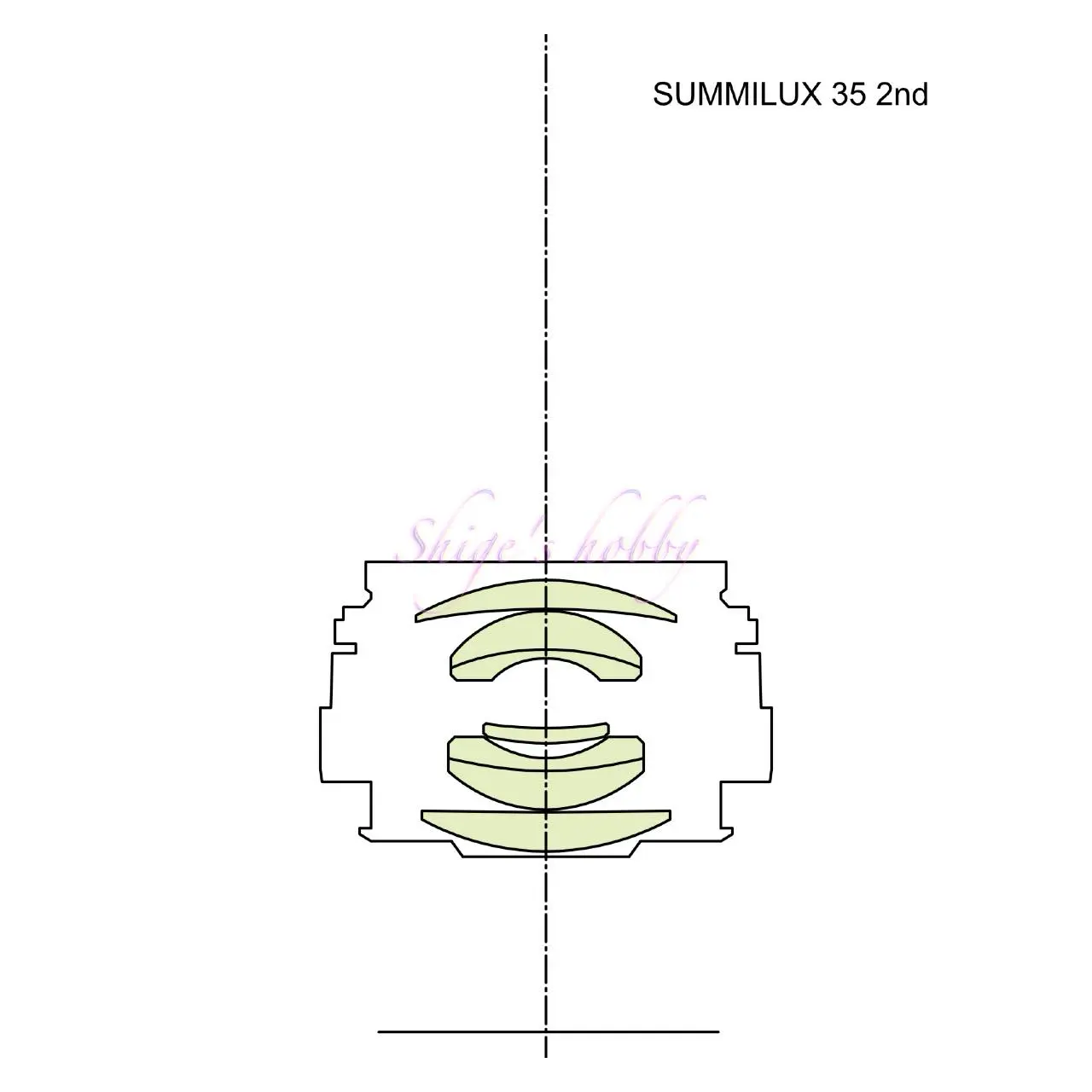
| Lens name | APOQUALIA | SUMMILUX |
| Local length(mm) | 35 | 35 |
| Max aperture | 1.4 | 1.4 |
| Min aperture | 16 | 16 |
| Leaf blade | 12 | 10 |
| Lens Construction | 6elements in 5group | 7elements in 5group |
| Min distance(m) | 0.6(Distance meter linkage is 0.8m) | 1.0 |
| Lens length(mm) | 22.5 | 28 |
| Lens Max diameter(mm) | φ50 | φ52 |
| Filter Size(mm) | 37 | Series-7 |
| Weight(g) | 85 | 222 Titan-color |
| Release date | 2016 | 1991 Titan-color |
Reference links
Affiliate links
Update history
- 2025.11.3
- 2025.6.17
- 2024.03.14
- 2023.06.12

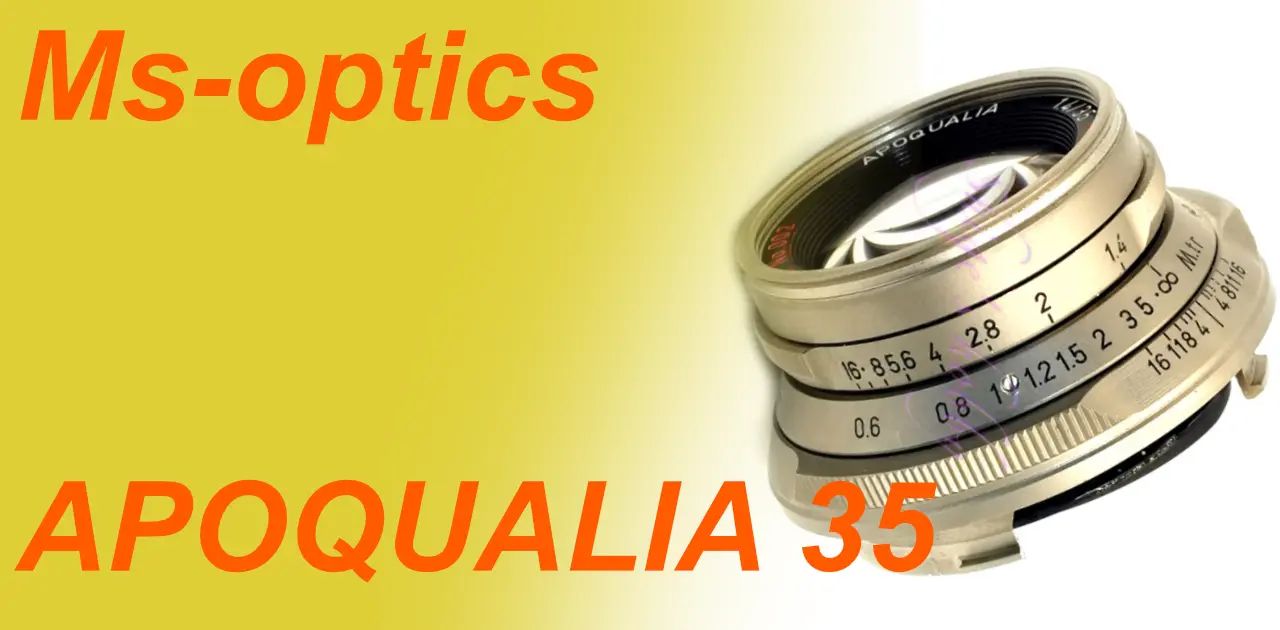

Be First to Comment